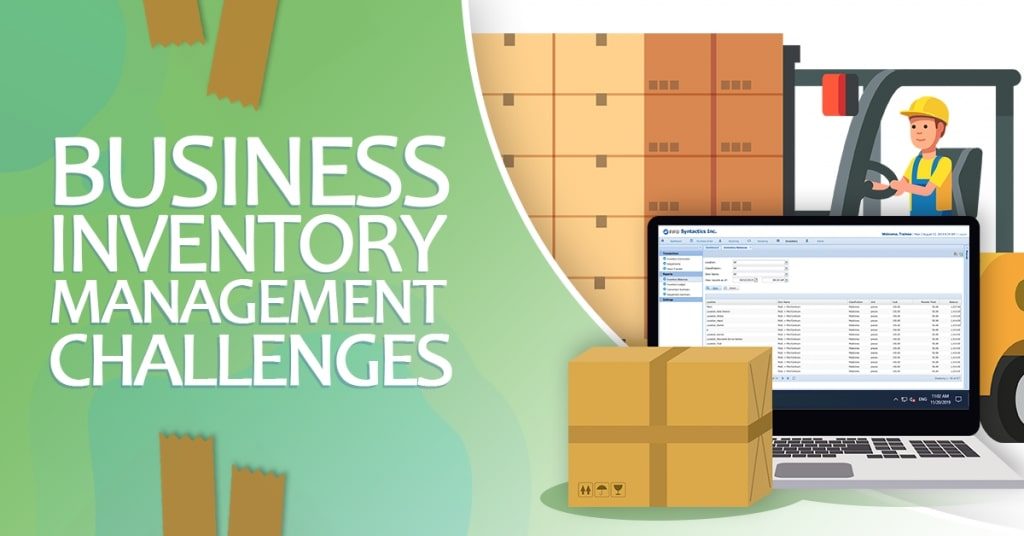Business inventory management challenges can be a major obstacle for businesses of all sizes. From maintaining accurate inventory records to optimizing inventory levels, managing inventory costs, and improving inventory visibility, there are numerous hurdles that businesses must overcome to ensure efficient and profitable operations.
This comprehensive guide will delve into the key challenges of business inventory management and provide practical strategies to address them.
Inventory management is a critical aspect of any business operation. Effective inventory management enables businesses to meet customer demand, minimize costs, and optimize their supply chain. However, managing inventory can be a complex and challenging task, especially in today’s fast-paced and competitive business environment.
Optimizing Inventory Levels

Maintaining optimal inventory levels is a delicate balancing act that requires businesses to meet customer demand while minimizing holding costs. Achieving this balance poses several challenges, including:
- Accurately forecasting future demand
- Managing inventory buffers and safety stock
- Preventing stockouts and overstocking
Forecasting Techniques
Forecasting techniques play a crucial role in optimizing inventory levels. By predicting future demand, businesses can adjust their inventory accordingly. Common forecasting methods include:
- Moving averages
- Exponential smoothing
- Regression analysis
The choice of forecasting technique depends on the nature of the product, demand patterns, and data availability.
Safety Stock and Inventory Buffers
Safety stock is a buffer of inventory held to protect against unexpected fluctuations in demand or supply chain disruptions. Inventory buffers, on the other hand, are additional inventory levels maintained to meet seasonal or promotional demands.
Setting appropriate safety stock levels is essential to avoid stockouts. However, excessive safety stock can lead to increased holding costs. Businesses must carefully consider the trade-off between customer service levels and inventory carrying costs.
Best Practices, Business inventory management challenges
Best practices for optimizing inventory levels include:
- Regularly reviewing and updating inventory forecasts
- Using inventory management software to track inventory levels and automate replenishment
- Implementing inventory optimization techniques such as just-in-time (JIT) or vendor-managed inventory (VMI)
Improving Inventory Visibility

Inventory visibility is crucial for businesses to manage their supply chain effectively. However, obtaining real-time visibility into inventory levels across the supply chain can be challenging due to factors such as:
- Lack of integration between different systems and departments
- Manual data entry and reconciliation errors
- Inaccurate or outdated inventory records
- Limited visibility into inventory in transit or at multiple locations
Technology can play a vital role in improving inventory visibility. RFID tags, for example, can provide real-time tracking of inventory items, while inventory management systems can centralize and automate inventory data, providing a single source of truth for inventory levels.Improved inventory visibility enables businesses to:
- Respond quickly to changes in demand by identifying potential stockouts or surpluses
- Optimize inventory levels to reduce carrying costs and improve cash flow
- Improve customer service by ensuring that products are available when customers need them
- Reduce shrinkage and losses due to theft or damage
Integrating Inventory Management with Other Business Processes

Integrating inventory management with other business processes, such as sales, purchasing, and production, can be a challenge for many businesses. Poor integration can lead to inefficiencies, errors, and lost productivity.For example, if sales and inventory management systems are not integrated, sales staff may not have access to real-time inventory levels.
This can lead to overselling, which can result in lost sales and customer dissatisfaction. Similarly, if purchasing and inventory management systems are not integrated, purchasing staff may not be aware of current inventory levels. This can lead to overstocking, which can tie up cash flow and lead to obsolete inventory.An integrated enterprise resource planning (ERP) system can help to streamline inventory management processes and improve integration with other business processes.
An ERP system provides a single, centralized database for all of a company’s data, including inventory data. This allows all departments to access the same real-time information, which can help to improve coordination and efficiency.
Benefits of Integrating Inventory Management with Other Business Processes
There are many benefits to integrating inventory management with other business processes, including:
- Improved accuracy: Integrated systems can help to improve the accuracy of inventory data, as all departments are working from the same real-time information.
- Increased efficiency: Integrated systems can help to streamline inventory management processes, which can lead to increased efficiency and productivity.
- Reduced costs: Integrated systems can help to reduce costs by eliminating duplicate data entry and reducing errors.
- Improved customer service: Integrated systems can help to improve customer service by providing sales staff with access to real-time inventory levels. This can help to reduce overselling and improve customer satisfaction.
Wrap-Up: Business Inventory Management Challenges

By understanding the challenges of business inventory management and implementing effective strategies to address them, businesses can improve their operational efficiency, reduce costs, and enhance customer satisfaction. Embracing technology, fostering collaboration, and continuously evaluating and improving inventory management processes are key to overcoming these challenges and achieving inventory management excellence.
